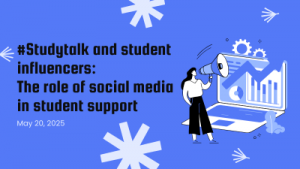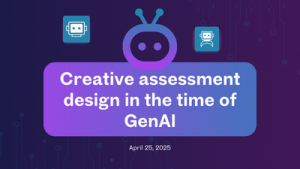CHAN Lo Yee (Louwi), CHONG Ho Ian, LAM Pui Keng (Alice) and WONG Wing Yan (Reace), The University of Hong Kong

WeChat has earned the title of a superapp and ranks sixth among the most popular social media apps worldwide, boasting 1.3 billion monthly active users (Dixon, 2024). The uniqueness of using WeChat in teaching and learning is that the feeling of forcing digital education, online learning, or e-learning does not seem to be present as the application is such an integral part of every Chinese student’s life.
The adoption of the flipped classroom approach has gained attention as a means to enhance student attendance, engagement, and motivation (Kay et al., 2019). However, this approach assumes that every student has fair access to a laptop, an iPad, or equivalent electronic devices. In reality, many students require grants and bursaries to afford the necessary equipment for accessing the digital learning environment (Source: Blended Learning Review Panel Report). On the other hand, every university student in China owns a smartphone, and according to research in Chinese medical teaching, every student at their medical school utilizes WeChat (Wang et al., 2017).
In this blog post, we explore how WeChat can transform the traditional classroom into an engaging and collaborative environment, thereby fostering effective student learning.
Before class
WeChat serves as a platform for teachers to provide learning materials to students. Students do not need to view or download materials separately from platforms like Moodle, YouTube or Perusall (What a hassle to log onto a separate platform when they have one that they cannot stop checking on a daily basis!). This feature enhances convenience and ensures that students have seamless access to relevant resources using an app that they are already familiar with. It is interesting that students nowadays are sometimes taken as ‘digital natives’ as Henderson et al. (2017) put it – when so many of them struggle the moment their teacher tells them to start working on a document on OneDrive.
Students can access class materials, engage in self-study, and initiate discussions with their peers (actively learning) before even stepping into the classroom. WeChat also acts as a platform for students to share their learning experiences, collaborate in activities, and support one another, fostering a sense of belonging and a supportive learning environment.
In class
During class, students are encouraged to share their ideas with their peers and teacher. WeChat enables easy communication through features like group chat, voice recording, and multimedia sharing, creating an interactive learning environment. Students have the opportunity to delve deeper into the content they have previously watched or read, and achieve a deeper level of understanding, often related to their own experiences.
After class
After class, students can upload their unresolved problems to WeChat. The teacher can follow up and facilitate discussions, provide guidance, and encourage further self-reflection. This process enhances students’ critical thinking and deepen their understanding of the subject matter.
WeChat’s group chatting and multimedia sharing features enable one-to-one and one-to-group interactions between students and teachers, promoting student-student and student-teacher interactions. According to Wang and colleagues (2017), 75% of the students provided feedback on WeChat, which means increased student participation throughout the learning process.
Drawbacks of WeChat
Implementing WeChat in the classroom requires teachers to manage and respond to student interactions, which can increase their workload. Adequate support and training should be provided to help teachers effectively manage this additional responsibility. While WeChat facilitates interactions, knowledge construction may not occur at higher levels if teacher expectations are unclear or if there is no recognition for students’ contributions. Teachers must therefore design activities that promote deep learning and ensure meaningful knowledge creation. However, these drawbacks do not just occur in the case of WeChat but are also common on other digital learning platforms.
What is unique and may be problematic with WeChat is how ‘super’ and multipurpose the app is. There is a lot of discussion on how social media negatively impacts students’ focus and mental health. The frequency of WeChat usage can have a complex effect on students’ academic performance (Hou, 2021). Compared to Perusall, for example, WeChat can be more distracting because it serves various functions like communication, entertainment, and sharing moments, and is not solely used for learning purposes. Self-control plays a crucial role.
The extent to which other superapps like WhatsApp can support student learning in a similar manner depends on their future development. WhatsApp, launched ahead of WeChat, remains focused on messaging and calling features. WeChat ecosystem seems to be unique so far, offering Mini Programs and a range of features without the need for separate app downloads. In sum, WeChat is a potentially powerful educational tool for Chinese contexts.
References
Blended Learning Review Report. (2022). Office for Students-appointed Blended Learning Review Panel. https://www.officeforstudents.org.uk/media/dc1c3c84-269a-4c40-8f87-15bfae0fcced/blended-learning-review-panel-report.pdf
Dixon, S.J. (2024, February 2). Most popular social networks worldwide as of January 2024, ranked by number of monthly active users. Statista. https://www.statista.com/statistics/272014/global-social-networks-ranked-by-number-of-users/
Henderson, M., Selwyn, N., & Aston, R. (2017). What works and why? Student perceptions of “useful” digital technology in university teaching and learning. Studies in Higher Education, 42(8), 1567–1579. https://doi.org/10.1080/03075079.2015.1007946
Hou, R., Han, S., Wang, K., & Zhang, C. (2021). To WeChat or to more chat during learning? The relationship between WeChat and learning from the perspective of university students. Education and Information Technologies, 26(2), 1813–1832. https://doi.org/10.1007/s10639-020-10338-6
Kay, R., MacDonald, T., & DiGiuseppe, M. (2019). A comparison of lecture-based, active, and flipped classroom teaching approaches in higher education. Journal of Computing in Higher Education, 31(3), 449–471. https://doi.org/10.1007/s12528-018-9197-x
Wang, J., Gao, F., Li, J., Zhang, J., Li, S., Xu, G., Xu, L., Chen, J., & Lu, L. (2017). The usability of WeChat as a mobile and interactive medium in student‐centered medical teaching. Biochemistry and Molecular Biology Education, 45(5), 421–425. https://doi.org/10.1002/bmb.21065



